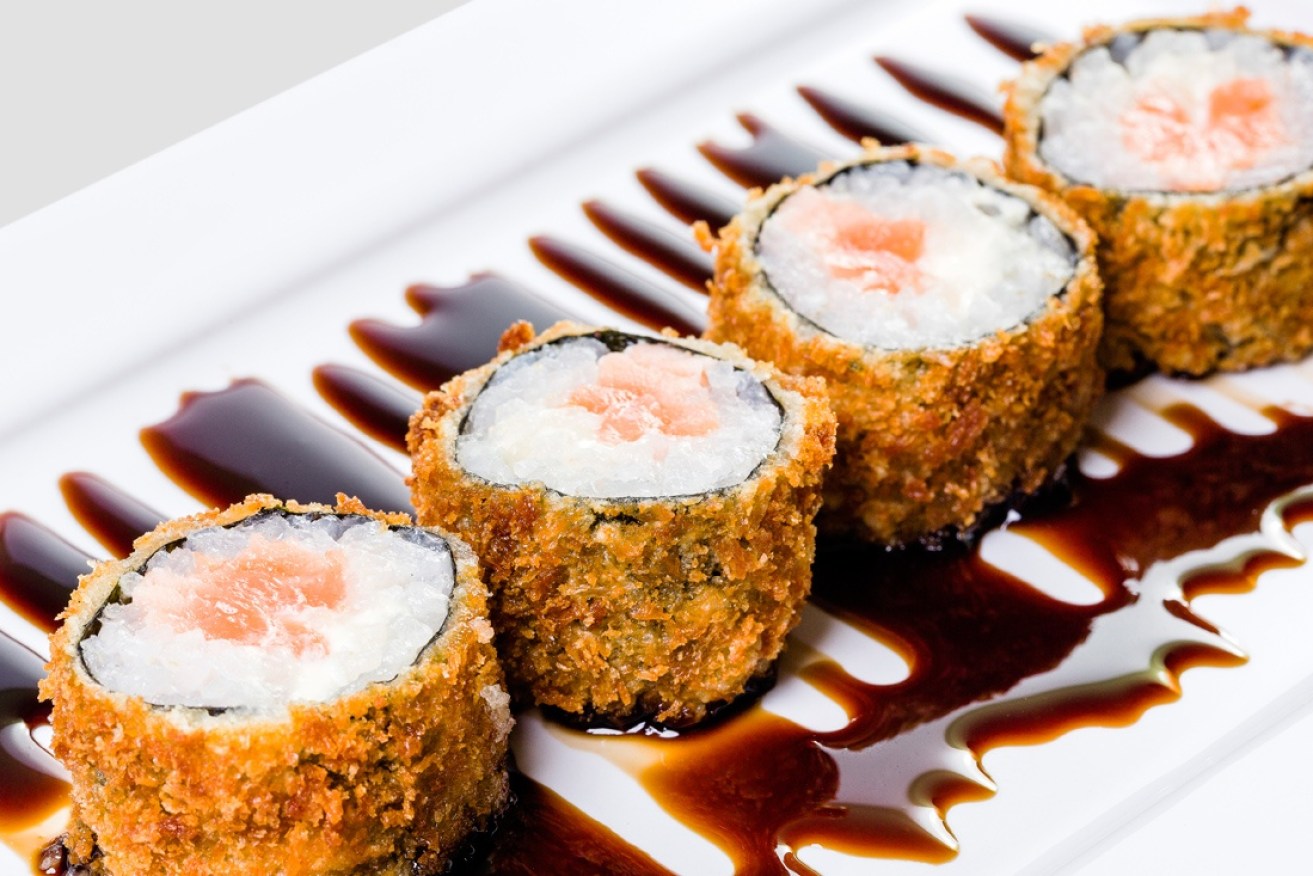Enjoy your sushi, but you might as well be eating a Big Mac


Sushi: it's really not that healthy. Photo: Getty
Feeling smug when you get a pack of sushi rolls for lunch, thinking you have made the healthy decision?
Depending on what filling you’ve opted for, you could be eating more than 4200 kilojoules (1000 calories) in one sitting – or more than twice what you should be consuming.
Sushi is among Australia’s favourite lunch options but it simply isn’t as healthy as many think.
A sweet chilli prawn hand roll from Sushi Train, for example, contains a whopping 1150 kilojoules (275 calories), a further 1030mg of stroke-inducing sodium, 7.6 grams of sugar and 5.6 grams of fat.
Throw on some soy sauce and the salt content is even higher.
Many sushi rolls, like crispy chicken or teriyaki chicken options, are laden with mayonnaise-rich fillings and sauces but even if you go for raw salmon or cucumber and avocado, what you are mainly eating is white rice – around half a cup per roll.
So if you’re eating four at a time, you’re a step up from a nutritionally poor diet of two cups of rice.
“There’s not a lot of fibre, not a lot of protein and minimal vegetables,” Melissa Adamski, a researcher in the Nutrition and Dietetics Department at Monash University, told The New Daily.
“When you sit down with two cups of white rice in a stir fry, you can gauge how much you’re actually eating … wrapped up in a roll, it’s harder to gauge.”
Ms Adamski said it is too easy for people to “overeat” sushi hand rolls and recommends people opt for brown rice options, limit themselves to two and add a side salad – or maybe a piece of raw fish without the rice for a protein boost.
“The brown rice makes you feel fuller and provides more fibre,” she said.
Joel Feren, an accredited practising dietitian and spokesperson for the Dietitians Association of Australia, told The New Daily that “eating three or four [hand rolls] in one sitting is much too much”.
The government recommends an intake of around 8400 kilojoules (2000 calories) per day.
Mr Feren added that sodium is the “elephant in the room” with sushi.
“There’s so much focus on calories and fats and sugar, but we know that Australians eat far too much salt,” he said.
“You can really overdose on salt with sushi. Some dishes are cooked in soy [sauce], crab meat is high in sodium – and when you add one of those 5ml containers of soy [sauce], you’re adding an extra 300 mg of sodium.”

Sushi or a Big Mac? Photo: Getty
A statement from the Heart Foundation to The New Daily notes that sodium content in sushi hand rolls generally ranges from 400-730mg per 100g, which is roughly one hand roll containing white rice.
“So, if people eat two sushi rolls then they can reach around half of their maximum daily salt intake in that one meal – approximately 1000mg sodium (2.5g salt),” they said.
“If you consider the fact that people also add soy sauce, this will take the salt content of this one meal even higher.”
This means that people eating four hand rolls in one sitting are consuming the maximum daily salt intake – and that is prior to adding soy sauce.
The recommended maximum salt intake for adults is 5g (one teaspoon) per day but Australians, on average, consume double that.
Eating too much salt can lead to high blood pressure, which is the leading risk factor for heart disease – the single biggest killer of Australian men and women.
If you have high blood pressure, you have a higher risk of heart disease, heart attack and stroke.
And that is another reason to go easy on the sushi.









